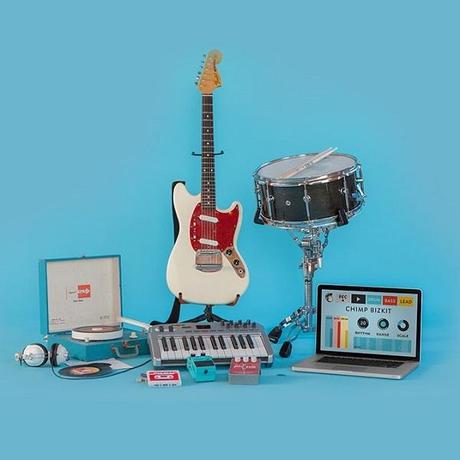If you’re actively promoting your music and don’t utilise email marketing then you’re one sandwich short of a holistic marketing picnic. If you have a website, blog, Tumblr, Twitter feed, Facebook fan page or a Sharpie, you have the power.
Email marketing for musicians means keeping your biggest fans up to date with your music news while also re-targeting casual listeners – no two campaigns will ever be the same, so it’s up to you how you use your newsletter software.

Which email platform should you use? Well, we recommend Mailchimp. Why? Because Mailchimp is pretty much the market leader, delivering over 4 billion emails every month.
It’s pretty easy to use, extremely versatile, free for up to 2 000 newsletter subscribers and if you like sassy cartoon apes named Freddie then you’re in for a treat.
Today is the day we start building an email list and get your music more attention. Ready? Let’s go!
If you already have a Mailchimp account, you might want to skip to Mailchimp tips for musicians for more advanced email marketing tips and tricks.
Step 1: Sign Up to Mailchimp
Signup at Mailchimp.com with your email address, choose a username and (strong) password, activate it via the confirmation email. Nothing you haven’t done before…
Step 2: Submit Your Band Details
It’s vital to fill out your profile a little bit. Pop in your band name, an address (necessary for CAN-SPAM Act and International spam law), your band’s website URL (super important), select ‘Music and Musicians’ from the ‘your industry’ drop down and specify your time zone.
Why does Mailchimp want to know your industry?
Well, this helps compare your open and click rates compared to other artists. It’s a handy feature once you start getting into email marketing and optimising your campaigns – more on that later.
Step 3: Build an Email List
A list is simply a group of subscribers – once you’ve built your sign up form you can test it by signing yourself up (perfect for when you want to double check your outgoing mail).
You can have different lists for different audiences, but you’ll likely want to start with a general list for fans. Give it a name and a reply-to email address, a default subject line (e.g. “News from Tim Tam Jazz Band”) and in the ‘reminder’ section, write a reminder of who you are (in case someone signs up, forgets about it, then wonders why they’re getting an email from you).
Save that and let’s continue…
Step 4: Add a Newsletter Sign Up Box
If you want newsletter subscribers, you need to provide the signup details on your website, Twitter feed etc.
- Go to the list menu.
- On the drop down on the right and select ‘signup forms’.
- Click ‘general forms’ to build a unique embeddable forms such as The Doughnut newsletter signup form below.
- To add a box (such as one for a telephone number), click ‘add a field’ on the right hand side.
- Once it is added, highlight it, change the label and save it.
- Click ‘design it’ to change the colours…
- …and finally the ‘share it’ tab to get the QR code, HTML code or the direct URL link.
What’s the difference between sign up box, QR Code and direct URL?
The embed code is for dropping into a website or blog post, the QR code can be used for printing on gig flyers and posters. Lastly, the direct URL link will take the user to the signup box, so it’s handy for those times when you can’t embed a signup box such as on Twitter or on your business card.
The Doughnut Music Newsletter
Step 5: Sending an Email Blast
To send a mail, either a once-off or an on-going series, you’ll need to click the campaigns tab from the left hand menu, then the big ‘create campaign’ button…
Steps When Sending Out Your Band Newsletter:
- Select your email list (i.e. your fan mailing list).
- Name your campaign (e.g. General News) and give it a subject (you might need to verify the reply to email if you haven’t already).
- Pick a pre-built one or design your own newsletter templates. The Drag & Drop editor should suit your needs.
- As an example, select a basic 1 Column template, drop in an image, edit the text box with your news.
- Click next to proceed to the plain-text version (this will display on non-HTML email readers). If it’s okay, click next.
- On the confirmation screen, check that all is okay and click ‘send now’.
- Kick your feet up.
Step 6: Mailchimp Reports
A day or two after your email has been sent, you may want to check out some stats – it’s good to know how you can improve next time.
From the reports section (on the left hand menu), you can see how many people open your email, how many clicks you received, where in the world your audience is scattered and more. This may not be terribly interesting after your first campaign, but as your list starts to grow and you get better at creating compelling mailers, you’ll surely find it invaluable.
Mailchimp Industry Stats: Music and Musicians
- Open rate: 30.00%
- Clicks: 2.60%
- Soft Bounce (e.g. Mailbox full): 0.50%
- Hard Bounce (e.g. Mailbox not found): 0.50%
- Abuse Complaints: 0.04%
- Unsubscribe Rate: 0.18%
